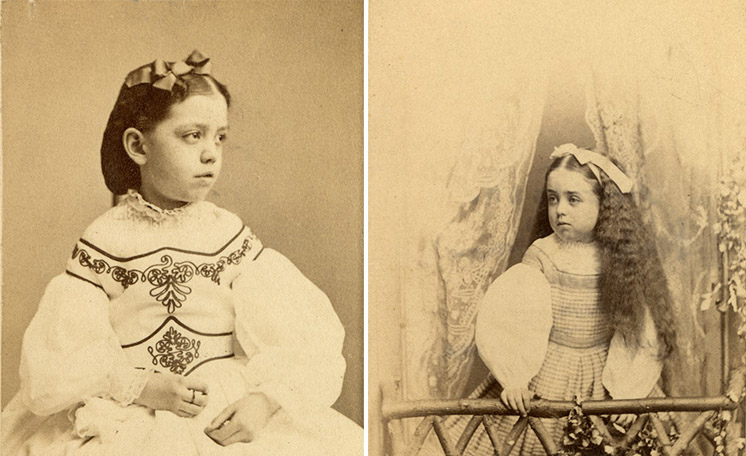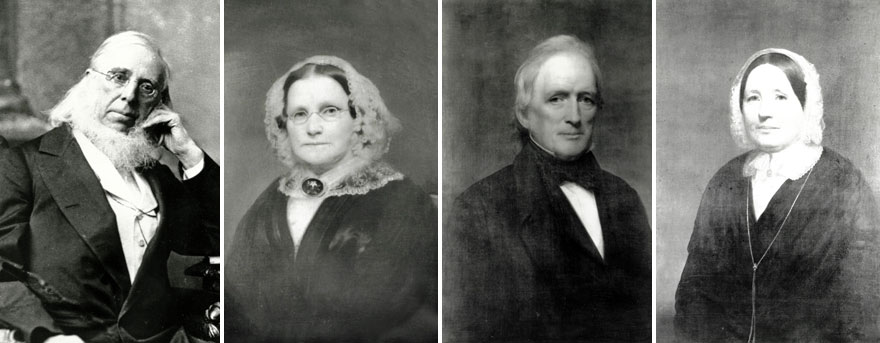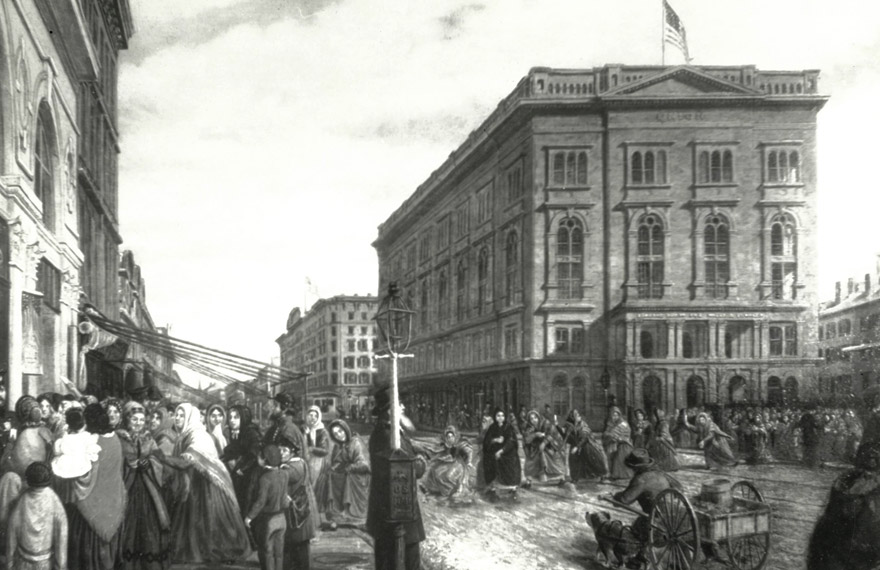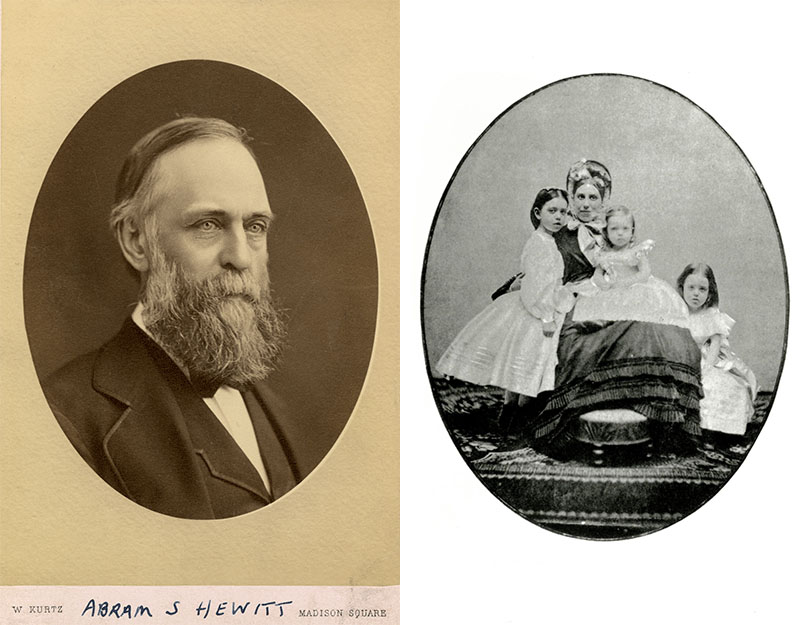
Amy and Sarah Hewitt
Introduction
This is the story of the Hewitt sisters, Amelia, Sarah and Eleanor, and their family. You will meet and get to know them all in twelve monthly “snippets.” We think that Sarah and Eleanor, who never married, were remarkable as independent women who not only were pioneers in the field of design education but successfully pursued their dream of opening a unique museum at Cooper Union. The snippets will touch on issues of women’s education, design for American industry, life in the Gilded Age, fashion, travel, and most important, the early days of the Cooper Union Museum for the Arts of Decoration, now our Cooper-Hewitt, National Design Museum.
Margery Masinter, Trustee, Cooper-Hewitt, National Design Museum and MA’93, History of Decorative Arts and Design, Parsons the New School for Design
Sue Shutte, Historian at Ringwood Manor
Setting the Stage: 1840-1870
Love of beautiful and exquisite workmanship was an inheritance from two practical and artistic grandfathers who were master workmen and master mechanics and craftsmen
– Eleanor Hewitt, 1919
Let's begin the story with the grandparents.

Left to right: Peter Cooper (1791-1883), Sarah Bedell Cooper (1795-1865), John Hewitt (1777-1857), Ann Gurnee Hewitt (d. 1873)
Peter Cooper was a great American visionary, inventor, manufacturer, and philanthropist. He was born in New York City to Dutch parents. With little formal education, he mastered many trades first hand, becoming known as a "tinkerer and mechanic," and, through various successful business ventures, became a wealthy man. Peter married his great love Sarah Bedell, and of their six children, two survived through childhood, Edward (1824-1905) and Sarah Amelia (1830-1912), known as "Amelia."
As Cooper's fortune grew, he dedicated himself to the belief that education was one of the rights of man and in 1854 laid the cornerstone of The Cooper Union for the Advancement of Science and Art. The Union was to be a free school for young men and women "forever devoted to the advancement of science and art, in their application to the varied and useful purposes of life," he wrote in a letter to the Trustees of this institution in 1859. He further specified, "In order to better the condition of women and to widen the sphere of female employment, I have provided rooms to be forever devoted to a Female School of Design."

Cooper Union foundation building. Painting by Thomas Coke Rackle (1808 – 1891) ca. 1861
Born in England, John Hewitt was a cabinetmaker like his father. John Hewitt established "a prosperous furniture business in New York, where his work rivaled that of Duncan Phyfe," wrote Eleanor. Unfortunately his cabinetmaking enterprise was destroyed by fire and he was financially ruined. A chair designed by John Hewitt will be on view at the Cooper-Hewitt Museum when it reopens in Fall 2014.
Hewitt's marriage to Ann Gurnee, of French Huguenot descent, produced seven Hewitt children. Our story centers on their son Abram (1822-1903), an ambitious and brilliant scholarship student at Columbia College, who ultimately became a distinguished public figure, serving as Mayor of New York in 1887-88. While at Columbia, Abram developed a close friendship with Peter Cooper's son Edward, who introduced him to his young sister Amelia. Edward Cooper and Abram Hewitt became partners in the iron manufacturing business with Peter Cooper. Abram fell in love and pursued Amelia Cooper. They married in 1855 and moved into the large home of Peter Cooper on Gramercy Park. Three generations of Cooper and Hewitt family members were to live a very happy life together.

Left to right: Abram Hewitt, courtesy of New York Historical Society; Mrs. Abram Hewitt with her daughters with Amy, Eleanor, and Sarah, courtesy of New York Historical Society
Abram and Amelia Hewitt had six children: Amelia Bowman (1856-1922), always called "Amy," later Mrs. James O. Green; Sarah Cooper (1859-1930), also known as "Sallie" or "Miss Sally"; Peter Cooper (1861-1921); Eleanor Garnier (1864-1924), also known as "Nellie" or "Miss Nelly"; Edward Ringwood (1866-1957); and Erskine (1871-1938).

Left, Amy, courtesy of New York Historical Society; Right, Sarah, courtesy of New York Historical Society.
Interactive Timeline of the Cooper Hewitt World
Full timeline is available here.
Sources:
The Making of a Modern Museum, by Eleanor G. Hewitt, 1919. Online at http://archive.org/details/makingofmodernmu00hewi,
Abram S. Hewitt, by Allan Nevins, 1935, Harper & Brothers, New York.
Coming up next month:
Childhood & “Snapshots” from the 1870’s
The lively households of the Cooper/Hewitt families
Education of the Hewitt Children
Distinguished guests at town and country homes
One thought on “Meet the Hewitts”
William R. Huber on May 28, 2020 at 5:19 pm
Margery,
I have been considering writing a family biography, if there is such a thing, about the Cooper and Hewitt families starting with Peter Cooper and ending with Ann Cooper Hewitt. It appears that you have a great start on such a book. Are you, or will you, write the book? If so, I won’t even start. If not, perhaps we could collaborate in some way.
Blessings,
Bill Huber